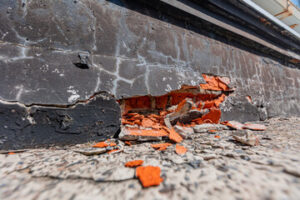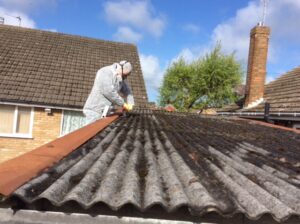Your home’s foundation protects it against storm damage and bears the weight of your entire house. It is essential to keep it in tip-top shape.

Non-structural cracks in walls and floors indicate that your foundation may need repairs. Structural cracks indicate that your foundation is sinking and can impact the rest of your house if left untreated. Contact Sugar Land Foundation Repair Solutions for professional help.
Foundation problems become more apparent in the spring as snow thaws and rain begins. This can cause new cracks and exacerbate existing ones, making them much more challenging to ignore. If you address them now, you’ll avoid more extensive damage and save money on costly repairs later.
Many homeowners assume that foundation repair can’t be done during the winter because of the cold weather and a lack of activity from home foundation repair companies. However, this couldn’t be further from the truth. Here’s why it’s actually a great time to work on foundation problems.
The soil tends to be drier in the winter, which makes it easier for professionals to inspect and evaluate a problem. Additionally, the lower humidity and temperature of the season make it easier to complete a foundation repair project with less disruption to your home and family.
In the case of pressed pile foundation repair, a common method used to correct sinking and shifting of homes, winter is an ideal time to perform the work. This method requires a large number of steel or concrete cylinders, which are pushed into the ground under your house one at a time. The crew would continue to push the cylinders in until they reach the point of refusal, which is when the soil won’t hold any more of them.
If you perform this type of foundation repair in the summer, the tension on the cylinders can be lost as they swell in the soil. This can cause a shift of your home’s foundation, which can be very expensive to fix. In the winter, however, the cylinders will be at their most stable because the soil won’t be as wet and soft.
Another problem that can be worsened by thawing ice and water from the snow melt in the summer is frost heaving. When this happens, it’s because the soil surrounding your home becomes saturated with moisture that then freezes overnight. As the heaving occurs, it puts pressure on your foundation, which can lead to cracks in the wall and other problems with your house.
Spring
The arrival of spring means putting on shorts and heading out for the first yard work of the year, planting flowers, and getting started with your annual home cleaning. It’s also a good time to take a look around your house for any foundation problems you may not have noticed during the winter. If you find any issues, now is the best time to schedule a thorough inspection from a reputable foundation repair company.
While foundation problems don’t usually happen overnight, they tend to grow worse over the course of years, though most homeowners don’t recognize the accumulating effects until the damage is severe. During the winter, with minimal rainfall and cold (and sometimes freezing) temperatures, soil is more stable and less likely to shift. This is why most people don’t consider winter the ideal season for foundation repair.
However, this does mean that the clay soil that supports your home will shrink significantly during this period and can cause your home to lift. This can lead to new cracks in your foundation and the need for repairs. Fortunately, this is also one of the simplest times to schedule a foundation repair.
As the summer begins, the hot weather and heavy rains can trigger additional settling in your foundation. This can exacerbate existing cracks and even create more, so it’s important to have your foundation checked by an expert at this time of year.
By the end of the summer, your clay soil will have re-consolidated. This is why fall is another great time to schedule a foundation repair. This is when the ground is still warm, but not as much as it was in the summer. Many people don’t have any vacation plans during this time, making it a good option for those who want to address their foundation problems before the holidays.
When the ground is dry, a professional can use spot piers to stabilize your foundation in a very cost-effective manner. This method of repair involves hand-digging and inserting concrete supports in areas of your foundation that are prone to movement.
Summer
The summer stretches from June to August, and it’s the time of year that many homeowners notice foundation problems. This is due to several reasons, including the thawing of frozen soils that shift and cause damage to a home’s foundation. It’s also the season when water is more likely to seep into areas of a foundation that shouldn’t be exposed, leading to cracks and other issues. Additionally, heavy rainfalls and sloppy mud can make it difficult to repair foundation issues like bowed walls or flooding.
This is why summer is a great time to make any necessary repairs to your foundation. With warmer weather and drier conditions, contractors can work faster and more efficiently than they can during the winter or fall. Additionally, the higher temperatures and lack of humidity allow waterproofing solutions to cure better and faster.
Almost all forms of foundation repair involve some form of excavation. The cold, wet soils of the winter and spring are often too hard to dig through for this process. However, the soils of summer are loose and easy to excavate. Contractors can get to the root of the problem much faster during the summer.
Many people overlook the importance of addressing their foundation problems, even when they notice warning signs. However, ignoring foundation damage or even neglecting it can lead to serious issues in the future. So, if you’re thinking about getting your foundation repaired, contact Structured Foundation Repairs today for a free estimate!
Whether you need to have your foundation repaired in the winter, spring, summer, or fall, our team of experts can help. We’ll discuss your options, help you understand any warning signs, and give you a fair and honest assessment of your situation. We’ll always recommend the best solution based on your unique needs. We look forward to hearing from you! Call or email us today to set up a consultation.
Fall
The fall season, stretching from about September through November, may be the best time to make foundation repairs. This is because the ground may not be as wet, and it is also easier for contractors to work in this weather. The kids are back in school, and there are no major holidays that can interfere with getting the work done. Additionally, if the signs of foundation issues are addressed in the fall, they can often be resolved before winter arrives.
Any time you see signs of a problem with your home’s foundation, it is important to act quickly. If you wait, the problem will likely only get worse. One of the main reasons for this is that soil expansion and contraction can affect the structure of your house, leading to cracks in the walls, floors, and ceilings. Additionally, a faulty foundation can cause plumbing issues in your home, as water can become trapped in the pipes if the foundation shifts.
While you can always get a foundation repair company to come out at any time, the best time of year to have this work done depends on a few factors. For example, if you are using pressed pilings, it is important that the soil conditions are not too dry or too wet at the time of installation. This is because the pressed piers depend on a bell-bottom base to stay in place, and the tension of the soil will affect their performance.
However, if you are using drilled piers, the soil condition is less important. This is because the drilled piers have their own built-in foundation, and the helical rods are driven into the ground to create a stable base.
